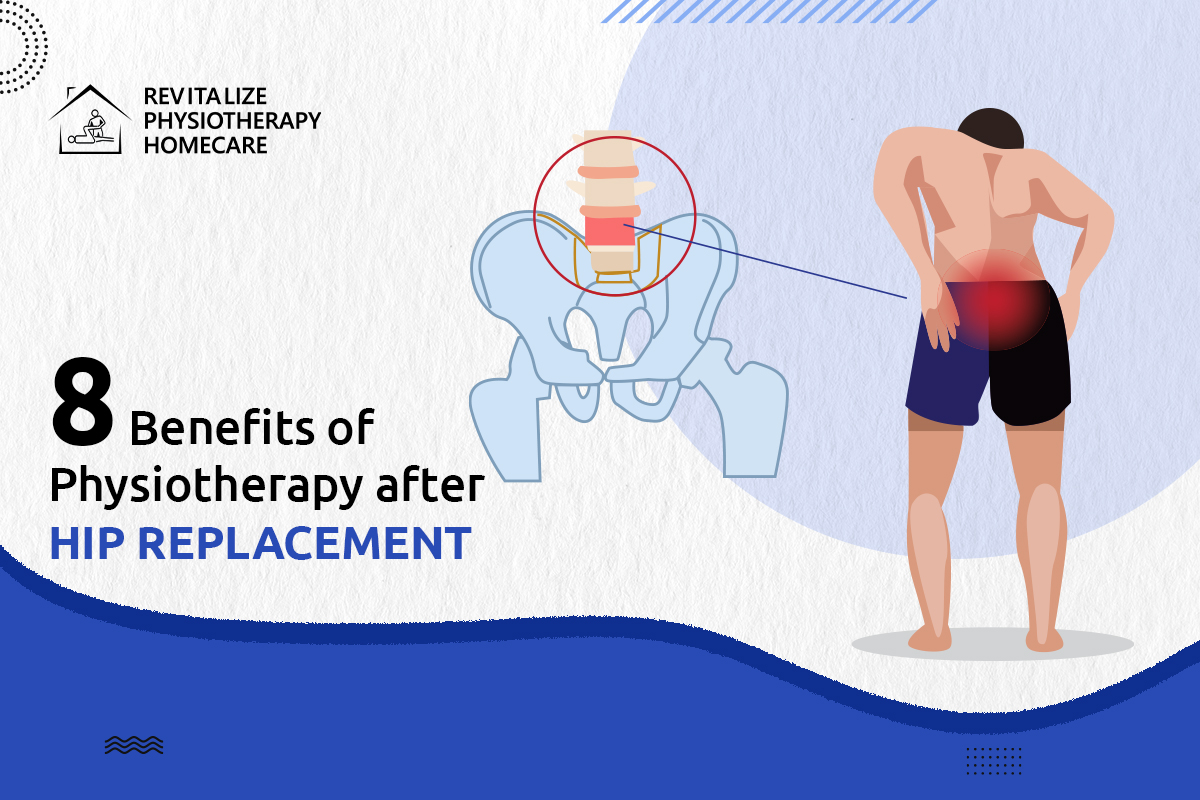8 Benefits of Physio after Hip Surgery
Hip replacement surgery is a common procedure that can help to relieve pain and improve mobility in people with severe hip arthritis. However, surgery is just the first step in the recovery process. Physiotherapy is an essential part of rehabilitation after hip replacement, and it can help you to achieve the best possible outcome.
Physiotherapy can start as soon as the day after surgery. A Brampton Physiotherapist will work with you to develop a personalized exercise program that is tailored to your needs. The exercises will gradually become more challenging as you recover.
Hip Replacement Physiotherapy Brampton is an important part of the recovery process after hip replacement. It can help you to reduce pain, improve your range of motion, and regain your mobility. If you are considering hip replacement surgery, be sure to talk to your doctor about the benefits of physiotherapy.
With the help of physiotherapy, most patients are able to make a full recovery and return to their normal activities Physio after hip surgery.
Benefits of Physio after Hip Surgery:
1. Pain Alleviation
Physiotherapy can help to reduce pain, improve range of motion, and strengthen the muscles around the hip joint.
A Physiotherapist will teach you a variety of exercises that you can do to strengthen the muscles around your hip joint. This will help to take some of the load off of the joint and reduce pain. They may use their hands to massage your muscles and joints, or to apply gentle pressure to help reduce pain and improve range of motion.
In addition to pain relief, physiotherapy can also help to improve range of motion, strength, and function after hip replacement. This can help you to get back to your normal activities more quickly and easily.
2. Enhanced Mobility
Restoring mobility is a primary goal of hip replacement surgery. Physiotherapy is a key facilitator in achieving this goal. Through a structured program of progressive exercises, patients gradually regain range of motion and flexibility in the joint. Physiotherapists use techniques to prevent scar tissue buildup and break down adhesions, ensuring that the joint moves smoothly and will reduce discomfort.
It is important to start exercises gradually and to listen to your body. If you experience any pain, stop the exercise and consult with your physiotherapist.
3. Muscle Strengthening
The muscles surrounding a replaced joint may have weakened due to the previous joint condition. Physiotherapy can provide tailored muscle-strengthening exercises that are essential for promoting joint support and stability. Some exercises recommended by a therapist can help to improve the overall integrity of the joint, facilitate smoother joint movement, reduce strain on the replaced joint, and promote proper biomechanics.
4. Faster Recovery
A structured physiotherapy program can significantly speed up the recovery process physio after hip surgery. Physiotherapy helps to promote tissue healing and prevent complications such as joint stiffness and muscle atrophy. This can lead to a faster return to regular activities. Exercises guided by an expert team of Hip Replacement Clinic Brampton guided can help to remodel the tissues, ensuring that the newly replaced joint adapts optimally to its intended function.
5. Long-Term Benefits
The benefits of physiotherapy go beyond the immediate recovery period. Patients who consistently follow their physiotherapy regimen will reap long-lasting rewards in terms of joint function and overall well-being. The regular practice of the prescribed exercises helps to build a foundation for joint health, reducing the risk of future complications and promoting a higher quality of life in the long term.
6. Psychological Well-being
The journey of hip replacement surgery and rehabilitation can be emotionally challenging. Physiotherapy, however, provides more than just physical benefits. It can also help to improve psychological well-being. As patients see tangible progress in their recovery, their confidence grows, which can lead to a better mental outlook. This positive reinforcement can be helpful in managing any anxiety associated with the recovery process.
7. Prevention of Joint Stiffness
Joint stiffness is a common concern after surgery. Regular physiotherapy sessions can help to prevent this issue. Physiotherapists use controlled joint mobilization exercises to maintain joint flexibility and prevent the formation of adhesions and scar tissue. This helps to ensure that patients can move with ease and comfort.
8. Customized Approach
Every individual's journey through hip replacement surgery and rehabilitation is different. Physiotherapy recognizes this and offers customized plans. Physiotherapists take into account the patient's age, the specific type of joint replacement, their physical condition, and their personal goals to create a personalized recovery program. This personalized approach maximizes the effectiveness of rehabilitation by addressing specific concerns and promoting successful recovery.
Conclusion:
A successful recovery after joint replacement surgery requires commitment and guidance of an expert Physiotherapy Clinic Brampton.
Physiotherapists are the ones who guide patients towards improved joint function, enhanced mobility, and a better quality of life. By embracing the benefits of post-hip replacement physiotherapy, individuals can take confident steps towards regaining their independence and rediscovering the joy of pain-free movement.
If you are looking for the best team of physiotherapists near you, then feel free to connect to Revitalize Physiotherapy Homecare.
Book an appointment today!




